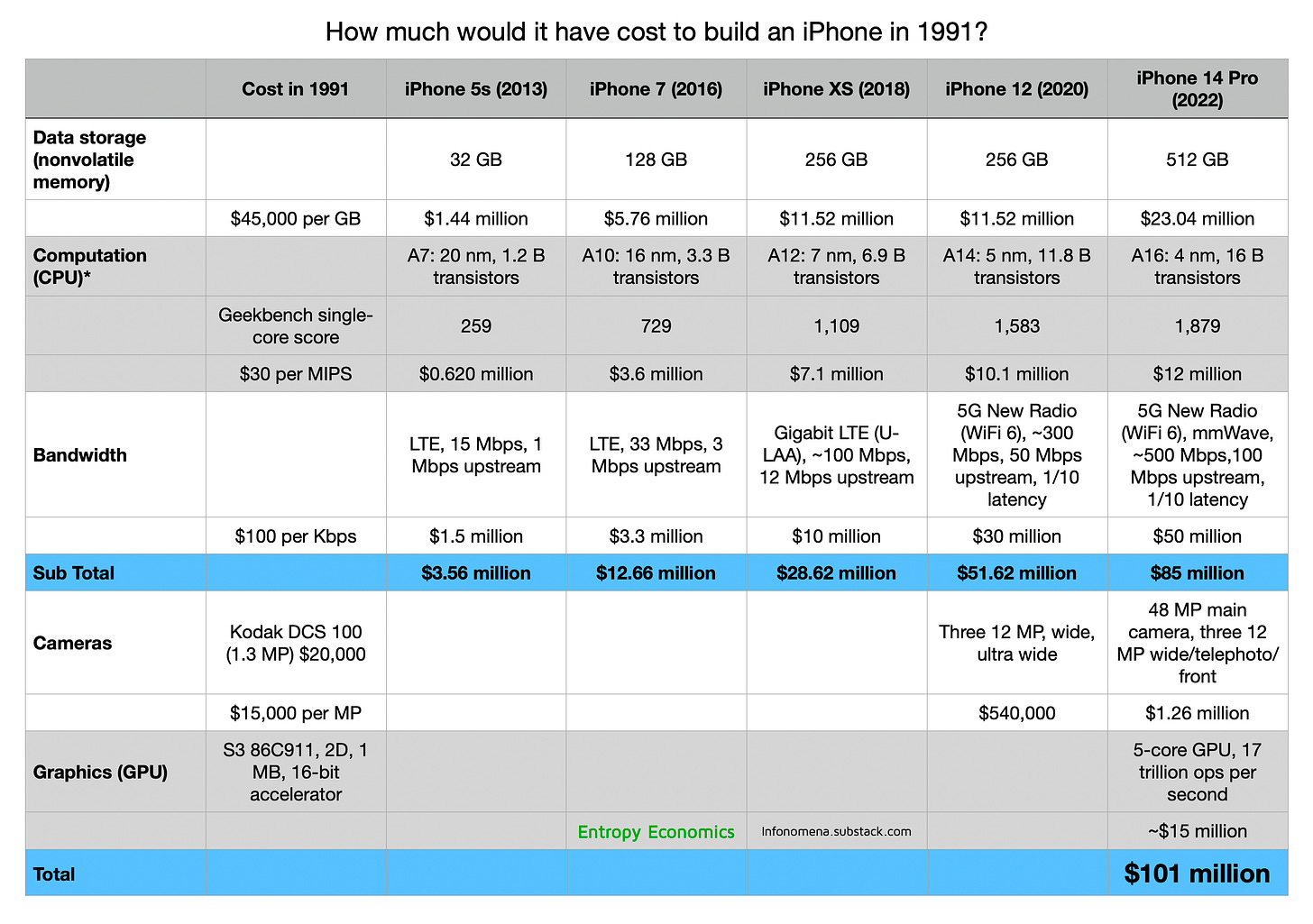Approximately every two years since 2014, we’ve asked the question: “What would an iPhone have cost in 1991?” You can read the backstory, including the inspirational RadioShack newspaper ad, here. Roughly estimating how much it would have cost to build a smartphone in decades past helps make concrete the difficult-to-grasp exponential cost curves of tiny electronic parts. It’s a fun exercise, which we hope brings Moore’s law to life.
In November 2020, we estimated that the iPhone 12 (the newest at the time) would have cost around $51 million to build in 1991 — with $540,000 worth of cameras. Several weeks ago, Apple released its iPhone 14. The highest-end model includes one terabyte of digital storage, which is 63 times more than the original iPhone, launched in 2007, and which alone would have cost around $45 million in 1991. Add in the A16 processor, the 5G modem, including new millimeter wave capabilities of up to 500 megabits per second, an amazing graphics processor, and four cameras totaling 84 megapixels, and you’ve got a device that would have cost at least $101 million to build in 1991. We’re not even adjusting for inflation or including the display, software, sensors, and numerous other components and features. Today, this $100 million marvel sells for around $1,000.
These types of exponential advances, which we find throughout the internet ecosystem, help explain both the big shifts in the world economy and the psychedelic social tumult we see all around us. My AEI colleagues and I discussed these topics and more at Adam White’s “Digital Platforms and American Life: A Conference on Technology and Government” yesterday.
See also: The $540,000 Camera in Your Pocket | Can the CHIPS Act Bolster Moore’s Law? | Digital Platforms and American Life: A Conference on Technology and Government | How Much Would an IPhone Have Cost in 1991?
This article originally appeared at AEIdeas.




